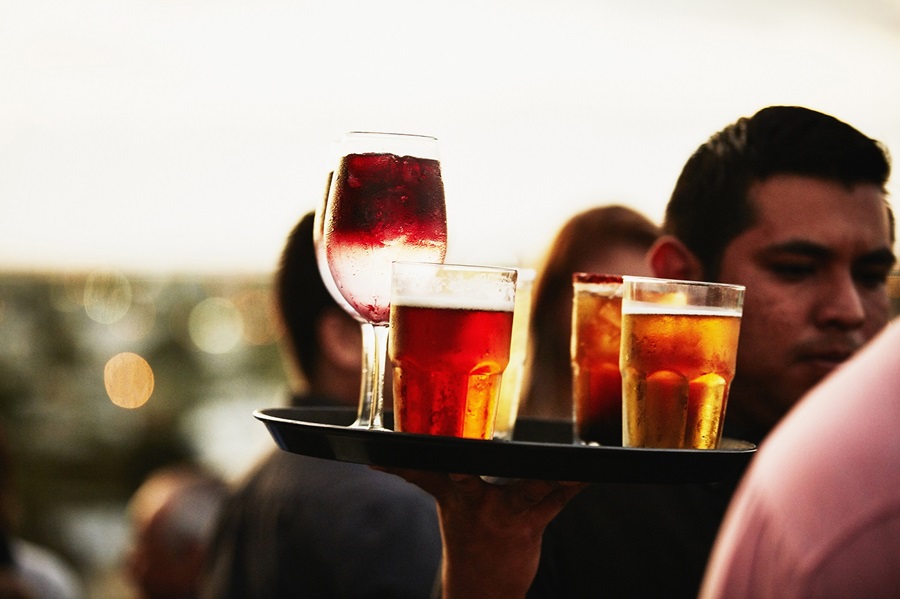The alcoholic beverage category has experienced an accelerated shift in both behaviours and attitudes this year. While purchase and consumption patterns unique to this category have emerged for the on-trade business, it will also be important to consider the state of social distancing policies in each market. As social distancing restrictions start to lift and then are re-applied, category leaders will want to plan for an evolving landscape instead of a rebound to pre-COVID-19 norms.
Below we explore alcohol purchase and consumption patterns based on research we’ve gathered from the past few months. We’ll also share how you can balance evolving trends with evolving governmental restrictions into your action plan for the rest of 2020 and beyond.
Purchase and consumption patterns
Whilst many businesses have been focused on offsetting on-trade losses with off-trade gains, our research shows there are still opportunities for brands to grow. We compared weekly purchase habits in the alcohol category during lockdown to a year ago and found that 70% of premium brands have grown their category share during COVID-19. Growth will come from a flexible approach that will ensure the right offer and assortment is deployed at a channel level.
Eat Out to Help Out gave the on-trade business a lift in August, but with the scheme finishing and new social distancing rules in place, the balance has soon shifted back again to off trade. As pub and restaurant restrictions ease again there will be limits on number and proximity of guests. Table service offers and outdoor spaces will be the focus, so brands should support maximising spend per transaction. Promotions away from the bar or offers that are outdoor consumption friendly, such as ready-to-drink, are worth considering.
Off-trade trends
Off-trade alcohol sales remains the fastest growing category at +24.2% YoY (Kantar, FMCG Panel, 4we 6 September 2020) in the UK, in line with behaviour across many other markets. Celebrations or after-work socialising has been re-contextualised. Consumers are changing the occasions they drink at home to replace what may have been on-trade occasions.
Beer has been the rising star. In the UK off-trade, beer sales increased by 66% for April to June this year. Some brands have capitalised on the shift and exceeded the loss from on-trade sales. Low/no alcohol has seen triple digit growth in June, reverting to pre-COVID-19 growth. Premium brands have also experienced growth primarily supported by ecommerce. Sustainable growth, however, should not be expected. With evolving store-based shopping, differentiation will be harder to achieve resulting in an emphasis on price, pack and promotion architecture.
Assortment and channel planning
With evolving trends in mind, here are a few steps you can take as you begin to respond to the current and future landscape:
- Model assortment for the total category. Balance internal margin and sales goals to each individual retail customer objectives, with shopper value, uniqueness and incrementality at the core.
- Understand the total portfolio of products. Identify the highest margin contributors, know what brings unique incremental value and what can be transferred, rationalise range, and identify new product introduction opportunities.
- More heavily-branded categories such as Alcohol, Dairy, Soft Drinks, and Confectionery are driving this strong growth. Understanding the incremental impact of your brand in the total category will help engagement and sell in with retail customers
- Consider bigger bottles and pack sizes, ready-to-drink offers, premiumisation, secondary location of spirits, ease of shop findability and PPA. 70% of premium brands have grown their category share during COVID-19 when compared to last year. As recessionary implications bite, shopper behaviour will change to price and promotion expectations.
- Understand transferable demand, including how shoppers may trade up or down. As more markets like Scotland introduce Minimum Unit Pricing, manufacturers will want to obtain data that tells them shopper inclinations. If shoppers are trading up to premium like they are in Scotland, this will inform assortment and portfolio decisions.
How to plan, adapt to the constant demands from the retailers to reduce space, rationalise SKU and facings, guarantee supply AND still grow is a challenge that almost all FMCG companies are experiencing. We advocate a combination of an analytics modelling tools, with shopper insights and category expertise to get the right offer and be flexible to rapidly adjust to where the market is going. Our Perfect Category team can help. Contact us for more information.


